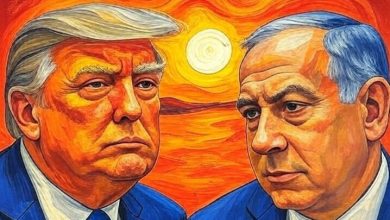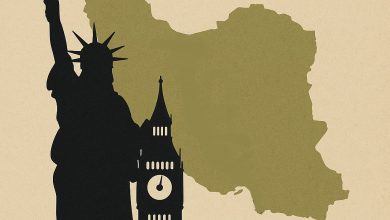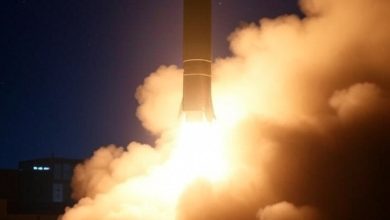Global Capitalism in the Post-Soviet Era
The Persistence of Crisis and the Reproduction of Authoritarianism in the Context of Regressive Globalization

The collapse of the Soviet Union in 1991 marked a turning point in the international order. This event not only brought an end to the Cold War but also paved the way for the expansion of neoliberal capitalism and the beginning of a new phase of globalization led by the United States. The international system entered a transitional period in which competing models of governance, ideologies, and geopolitical arrangements introduced a variety of actors to the global stage. Among these, several prominent figures—Ayatollah Ali Khamenei, Vladimir Putin, Xi Jinping, Narendra Modi, Benjamin Netanyahu, and Donald Trump—emerged as representatives of new forms of war and peace, playing decisive roles in redefining or imposing structures of power in the post-Soviet era.
These actors function not merely as national leaders but as transnational agents who employ ideology, religion, ethnicity, economics, geopolitics, geography, and demographics to advance their particular projects. As such, they have become central players in the ongoing tension between the “clash of civilizations” doctrine and the discourse of a “dialogue of civilizations.”
Post-Soviet Capitalism: From Ideological Rivalry to Neoliberal Hegemony
With the decline of the Eastern Bloc, Marxist discourse in global governance weakened significantly, and neoliberal capitalism—invoking Fukuyama’s thesis of the “end of history”—emerged as the dominant model of the world order. The main features of this new system included:
-
The global expansion of economic liberalization through deregulation, privatization, reduced state intervention, and integration of financial markets.
-
The collapse of competing ideological systems and the diminished capacity of the Global South to resist imposed market models.
-
The instrumental use of democracy and human rights as tools for legitimizing military and economic interventions.
Rather than advancing liberal democratic values, global capitalism after the Cold War has reinforced authoritarian capitalism in the East and technocratic capitalism in the West.
The Islamic Republic of Iran: Resistance Economy or Rentier State Capitalism?
Ayatollah Khamenei, as Supreme Leader of the Islamic Republic of Iran, introduced the concept of the “resistance economy” as an ideological response to global capitalism. While ostensibly designed to promote economic independence and reduce reliance on the global system, in practice:
-
Iran’s rentier economic structure remains heavily dependent on oil revenues and informal interactions with the global economy.
-
Economic policies largely serve elite groups and quasi-state institutions that operate within the logic of capitalism itself.
-
Widening inequality, structural corruption, and the absence of social justice expose a hidden alignment with the logic of capital accumulation, despite rhetorical opposition.
Thus, instead of offering a genuine alternative to global capitalism, the Islamic Republic has reproduced a form of quasi-ideological state capitalism.
Netanyahu: Technological Nationalism and Hyper-Capitalism
Benjamin Netanyahu, Prime Minister of Israel, embodies right-wing nationalist capitalism closely linked to neoliberal technological development. Under his leadership:
-
Economic policies have emphasized privatization, reduced state involvement, and the promotion of foreign investment in high-tech industries.
-
At the same time, settlement expansion, structural violence against Palestinians, and militarization have been reinforced through private sector financing.
-
The instrumentalization of religion (religious Zionism) to justify discriminatory policies highlights the nexus between faith, capital, and security.
Netanyahu represents a form of security-oriented capitalism rooted in ethnicity and religion, operating within the framework of a unipolar international system while simultaneously claiming geopolitical independence.
Trump: Conservative Populism in Service of Financial Capitalism
Donald Trump epitomizes the resurgence of American right-wing populism under the banner of “America First.” His policies not only redefined the boundaries of globalization but also replaced traditional neoliberalism with a racially charged, protectionist populism:
-
Corporate and elite tax cuts, deregulation, and empowerment of Wall Street.
-
Mobilization of nationalist, anti-immigrant, and Islamophobic sentiments to galvanize public opinion.
-
Confrontation with international organizations such as NATO, the WTO, and multilateral treaties.
Trump symbolizes the reproduction of irresponsible financial capitalism under the guise of nationalist populism, reinforcing authoritarian tendencies within the U.S. while weakening the legitimacy of liberal democracy.
Putin: Authoritarian Nationalism and Russia’s Emerging Capitalism
In the post-Soviet landscape, Vladimir Putin positioned himself as the heir to Russia’s authoritarian legacy while responding to the unrestrained ambitions of U.S.-led global capitalism. His strategy combined the revival of national authority, redistribution of economic power among Kremlin-aligned elites, and resistance to Western influence. The outcome has been the consolidation of a model of “authoritarian capitalism” rooted in both state control and nationalist ideology.
Xi Jinping: State Socialism Blended with Planned Capitalism
Xi Jinping, President of China and General Secretary of the Communist Party, learned from the Soviet collapse to avoid repeating its fate. He pursued two parallel tracks: internal economic reforms and the external expansion of Chinese influence. By capitalizing on U.S. preoccupation with post-9/11 wars, Beijing prepared itself for the role of a global power. The result was a distinctive model of “state capitalism under party leadership,” combining centralized political control with dynamic engagement in global markets.
Narendra Modi: A Middle Power in the Shadow of Asian Rivalries
Narendra Modi, Prime Minister of India, positioned his country—an emerging nuclear power and historic rival to China—within 21st-century great power competition, often encouraged by U.S. strategic initiatives. Through economic development, military expansion, and regional alliances, India under Modi has prepared for multiple geopolitical scenarios. While striving to maintain an independent and balanced position between the West, Russia, and China, India nonetheless frequently aligns itself with one of the major poles of global power.
Shared Patterns Across These Models
Despite their differences, these models share several core characteristics:
-
Resistance to the liberal international order and multilateral institutions.
-
Structural alliances between economic elites and political power, concentrating wealth and authority.
-
Use of cultural, ethnic, and religious identities as tools for legitimizing domestic and foreign policies.
Conclusion: Regressive Globalization and the Future of World Order
Global capitalism in the post-Soviet era has moved not toward development and global justice but rather in the direction of “regressive globalization”—a process in which profit, dominance, and geopolitical rivalry outweigh human values. Structural violence, economic sanctions, and proxy wars have become normalized features of international politics.
Three decades on, it is clear that global capitalism, whether in religious, nationalist, authoritarian, or populist forms, has undermined its own capacity to produce a stable and just order. A rethinking of the international system—through strengthening multilateral institutions and embracing dialogue over confrontation—offers a potential alternative to the logic of the “clash of civilizations” and a pathway toward reducing conflict and promoting global justice






